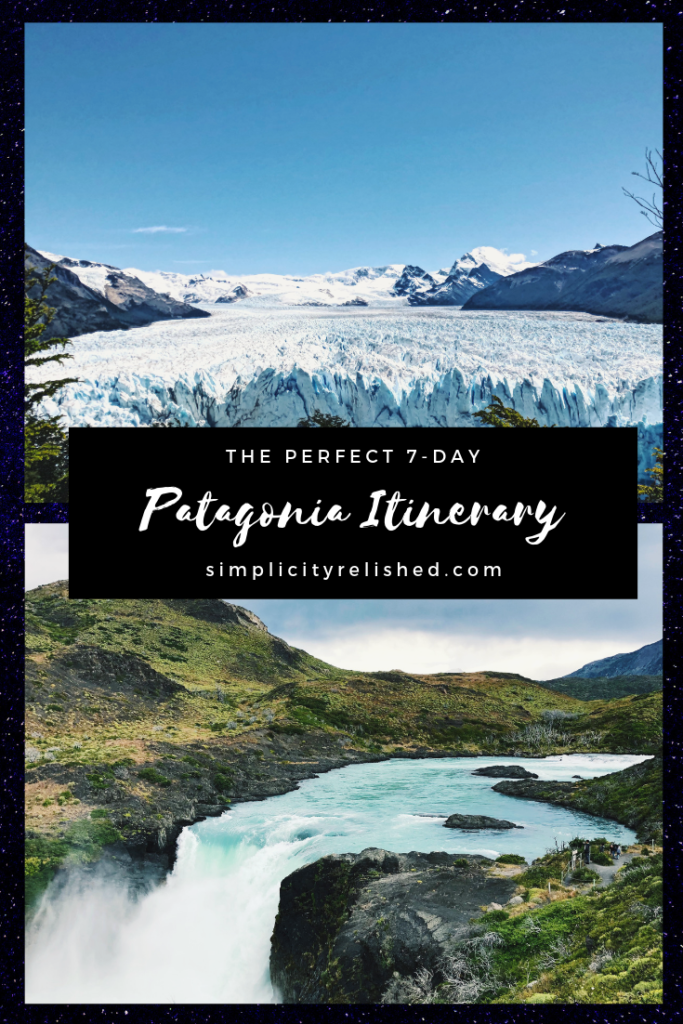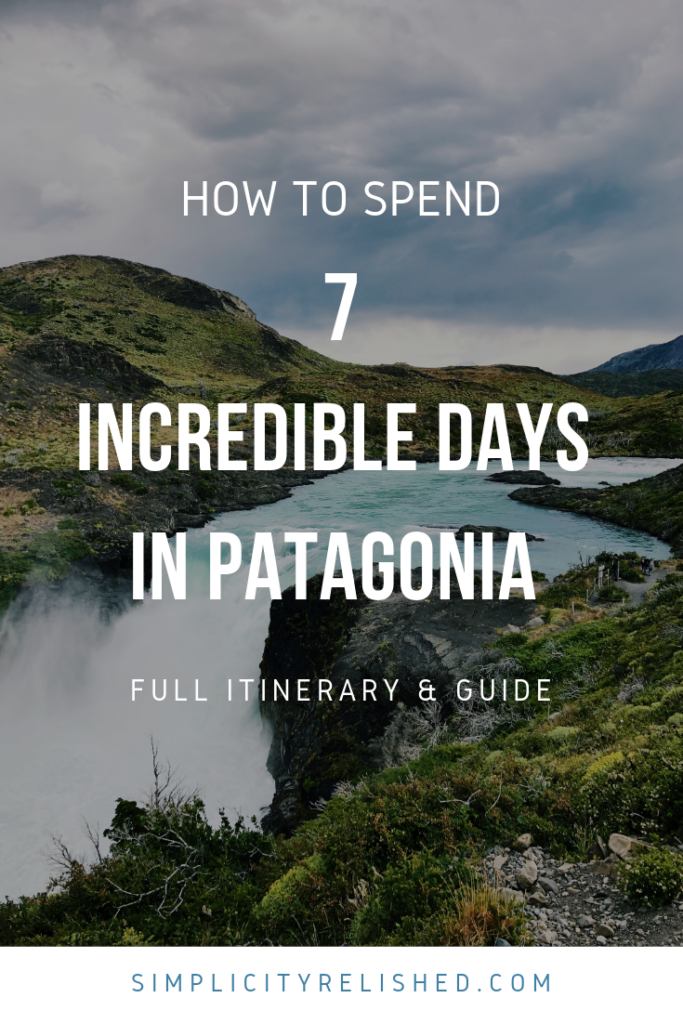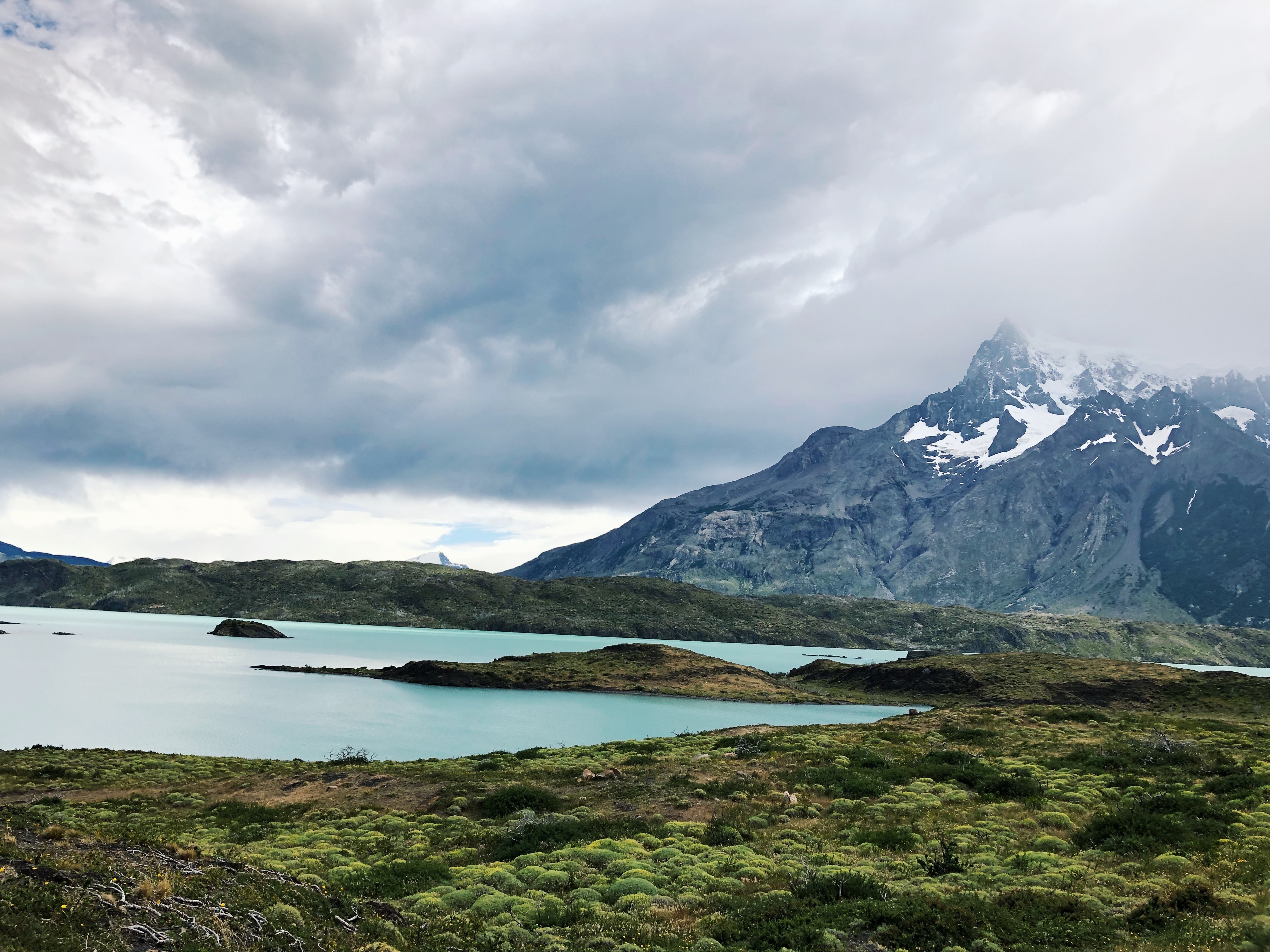Mountains that thunder, rivers that glow. Creaking glaciers that stretch for miles. Condors, guanacos, and flamingos that fill the sky, the earth, and the water. Patagonia is nothing short of magical.
And many people would be scandalized by a trip as short as 7 days in this massive region covering the most southern portions of Argentina and Chile. So why such a short itinerary? Because not everyone has multiple weeks to spend at the bottom of the world, but everyone should try to make it to Patagonia. At least once.
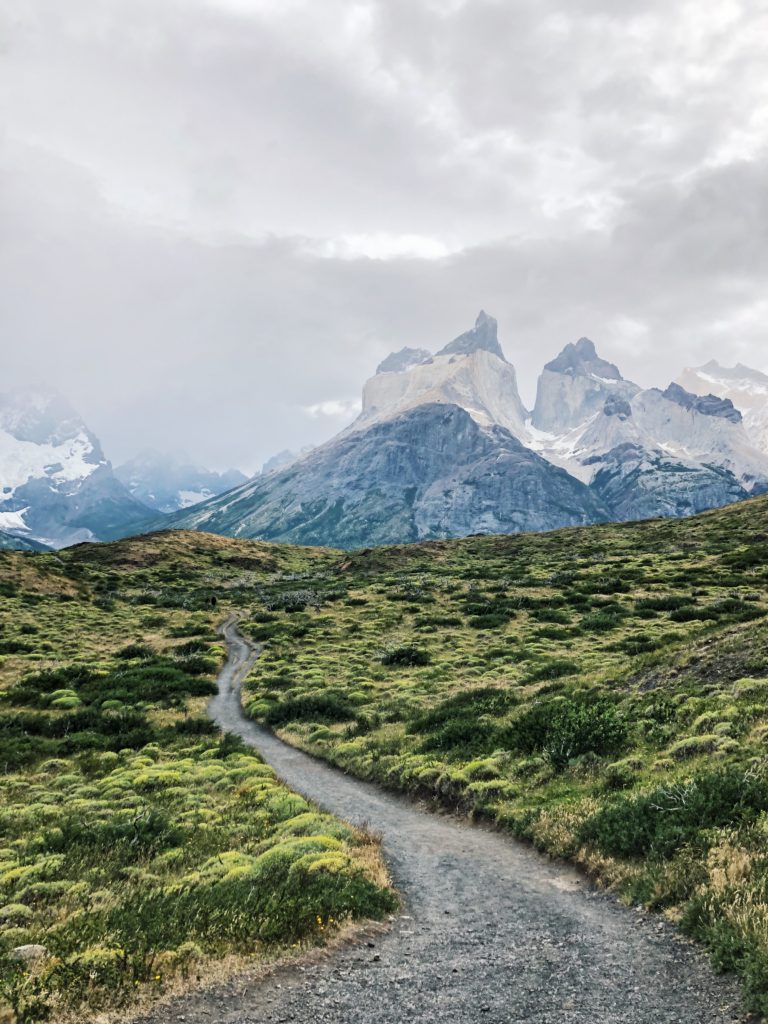
Between December 2018 and January 2019, we traveled to Patagonia as part of an epic family trip that everyone will remember fondly. On the front end we spent 5 days in Buenos Aires, Argentina, and on the back end we explored Santiago, Chile and took a quick jaunt to Chilean wine country. Because Patagonia is so far away from most of the world, it’s worth considering exploring both of these cities as part of your journey. It’s highly likely you’ll have to fly through both.
A note on travel pace and budget: This was a leisurely family trip, not a backpacking trip! We had a variety of interests and ages on this journey, and we were ALL able to enjoy ourselves and feel like we saw some of the best of Patagonia. If you’re looking for a hiking/backpacking guide (which would include the W trek, etc.), here’s a good one. Furthermore, this is not exactly a “budget” approach to Patagonia, but you can definitely make your own adjustments to the itinerary by cutting out guided tours and private transfers, or staying in lower-budget hotels.
Table of Contents
Day 0: Fly from Buenos Aires to El Calafate, Argentina
Your journey begins here, at the entrance to Argentinian Patagonia and one of the southern-most settlements in the world. Flights leave regularly from Buenos Aires to El Calafate, a sleepy town with a bright blue lake.
Flying in, I saw turquoise glacier water wending its way through the Patagonian steppe, and tears sprang forth. The glacial water was a striking, milky hue that carved through brown aridness, evoking notions of mystery and miracle all at once.
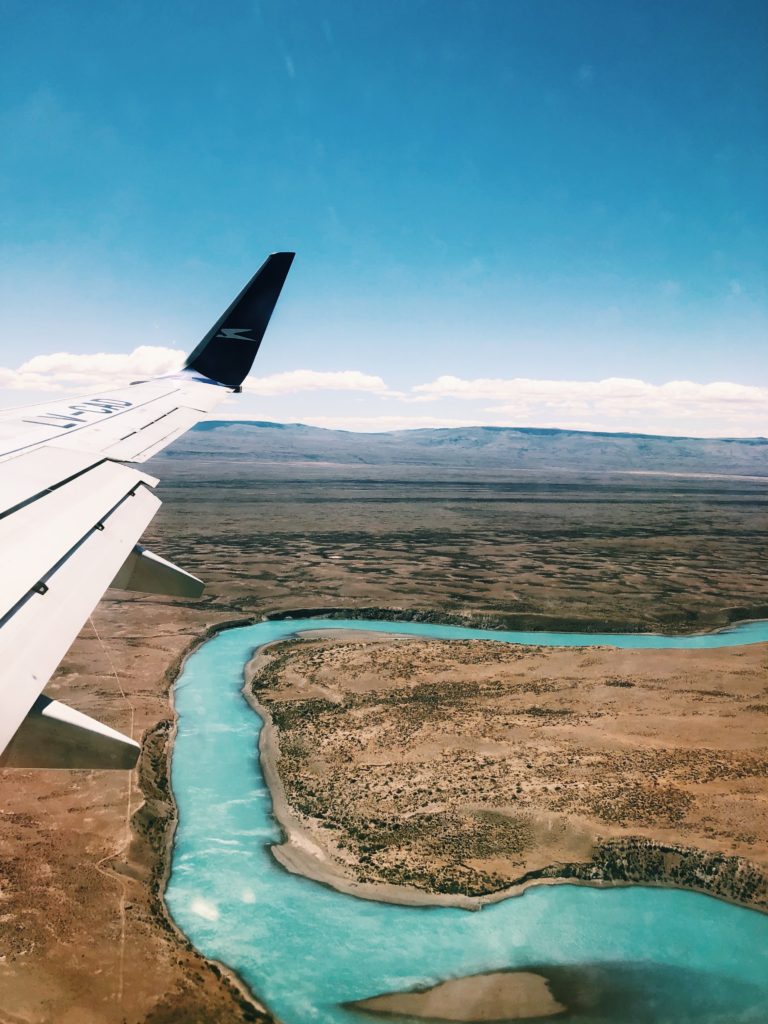
We stayed at El Esplendor, a lovely facility perched high up on a hill in El Calafate complete with a heated pool and spa (which we didn’t go to because… Patagonia). There are a range of accommodations here, but you’re just paying for the level of comfort and room quality. Location does not matter too much here, as long as you’re willing to walk to the downtown area
Downtown, you will find a range of food options, tour booking agencies, and gift shops for any supplies you might be missing. I recommend packing everything you can remember to pack (see bottom of this post) rather than purchasing in El Calafate.
Day 1: Perito Moreno Glacier
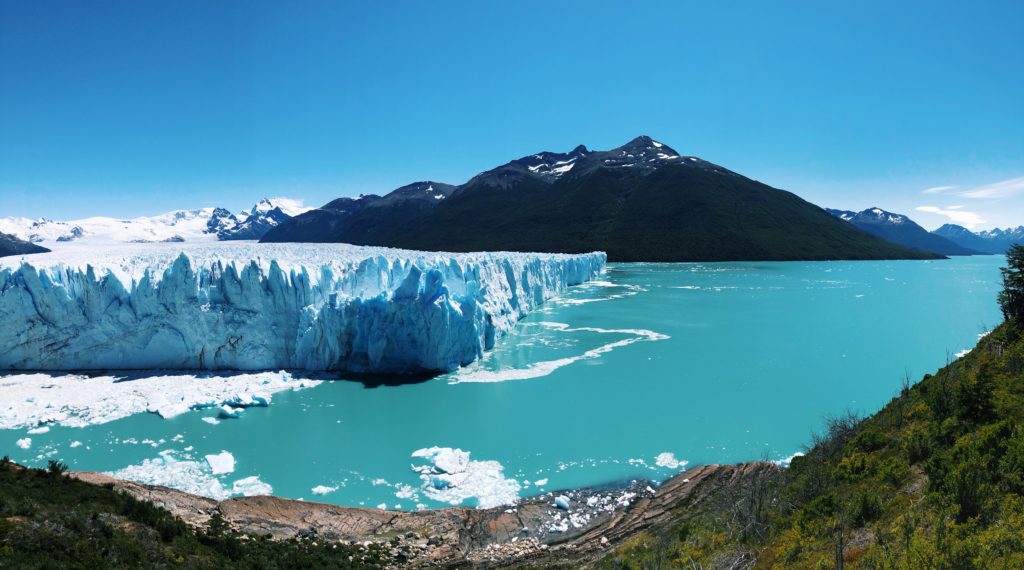
This glacier is a must-see, and El Calafate is the best place start. I highly recommend booking a tour in advance, which includes picking you up at your accommodation, transferring you to the boat, guiding you on a glacier trek (crampons included), and returning you all the way back to El Calafate. All tours are run by Hielo & Aventura.
The first time you see the Glacier will probably be from the water. The ice is about 70 to 100 meters thick, a scale that is hardly believable until you are right up close. You’ll see chunks of ice occasionally sliding off the side of the glacier and crashing into the lake— a process called “calving”. Be sure to film the glacier approaching from the boat, an amazing view that only gets more incredible as you go.
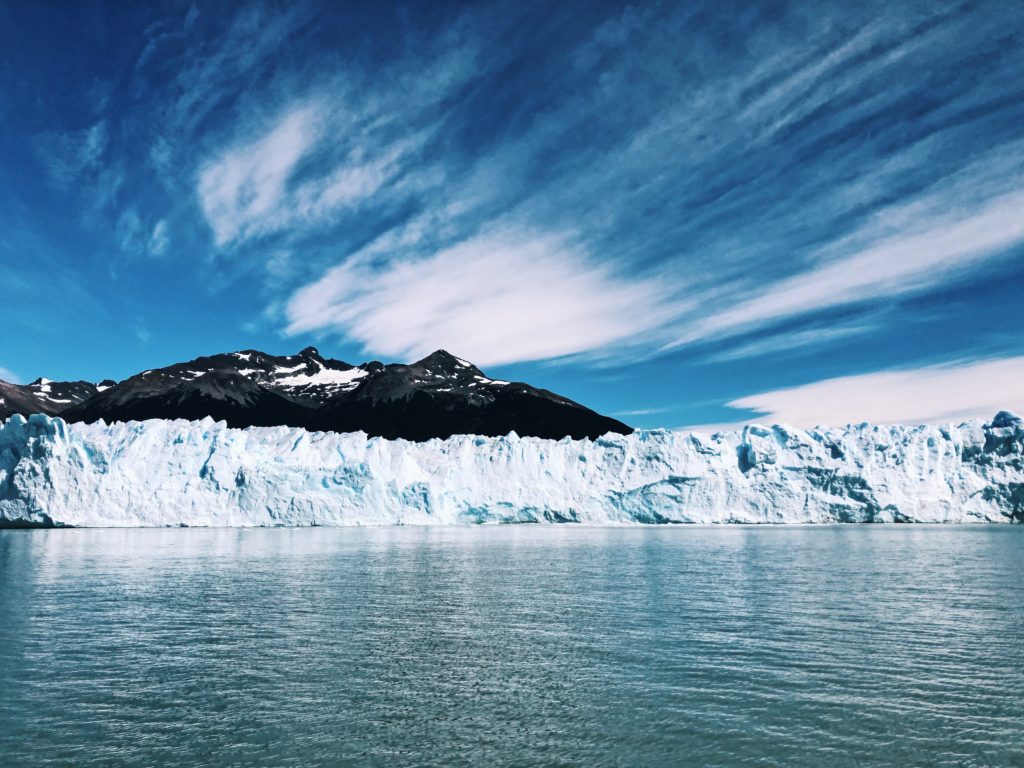
Upon arrival at the shore, the tour is broken into smaller groups and prepared for trekking. Trekking on the glacier itself was probably one of the most memorable moments of our entire trip. Crampons are tied to your shoes, and you walk awkwardly toward the ice. Once you are actually on the ice, the crampons are less taxing on your feet.
We sprang for the 2-hour glacier trek and felt like it was plenty. Some friends we met along the way did a 4-hour trek and told us that they went all the way to a “lake” in the middle of the glacier, so that might be worth it if you’re interested! That said, be aware that this is surprisingly strenuous, so if there are people in your group who are not especially fit, the 4-hour trek will be really challenging.
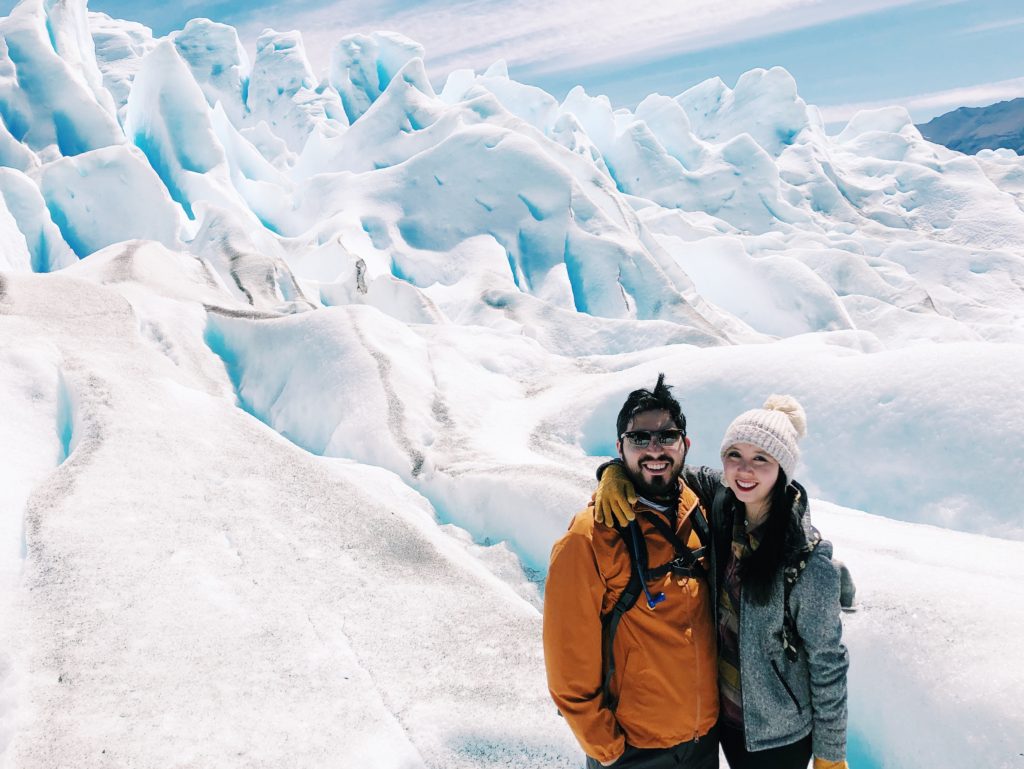
After the trek, you’re given lunch and loaded back onto the boat. The bus at the other end takes you to the famous Perito Moreno lookout. This lookout is really busy, but offers a very comfortable and wheelchair-accessible way to view the glacier. Be sure to explore all levels of the lookout, and keep your eye on the glacier for calving! After this stop, the bus takes you back to El Calafate.
Tips for this excursion: Wear super sturdy shoes, hiking boots are the best. The UV reflecting off the glacier is super strong and will burn if you’re unprepared. Apply SPF to any exposed skin (including under your chin!), and reapply as needed. Bring dark sunglasses, a scarf, gloves or mittens, and a hat to cover up your face and neck. Unless it’s windy, the glacier is not too cold; prepare to sweat from your trekking workout! And since you’ll be outside for a while, bring tissues (and reapply sunscreen!!!).
Day 2: El Chaltén
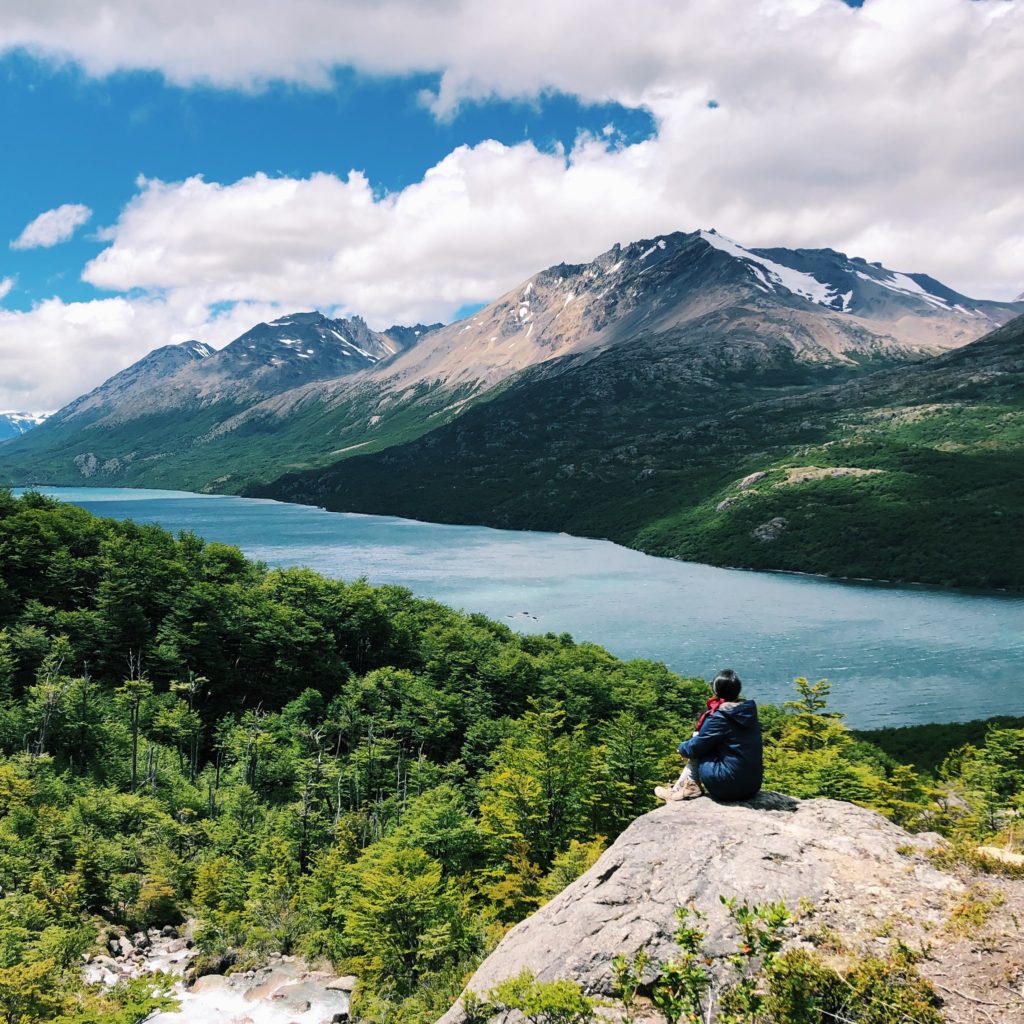
I must say, El Chaltén was probably my favorite day in the entire trip! You can stay there, or you can continue to stay in El Calafate and book a tour that take you there (3 hours away) and back. We chose the latter option, and it worked out great. Our tour to El Chaltén was run by Criollos Turismo, and I highly recommend the itinerary we picked out, which focused on creeks, rivers, and featured a magnificent hike. You can visit their office in El Calafate to select the right itinerary for you.
As mentioned, the tour picked us up at our hotel and began with a really long bus ride. But it was gorgeous, the length of the ride hardly mattered. We made numerous stops along the way because the road to El Chaltén is stunning. I saw flamingos and guanacos all along the road, not to mention wide glacial rivers and austere mountains.
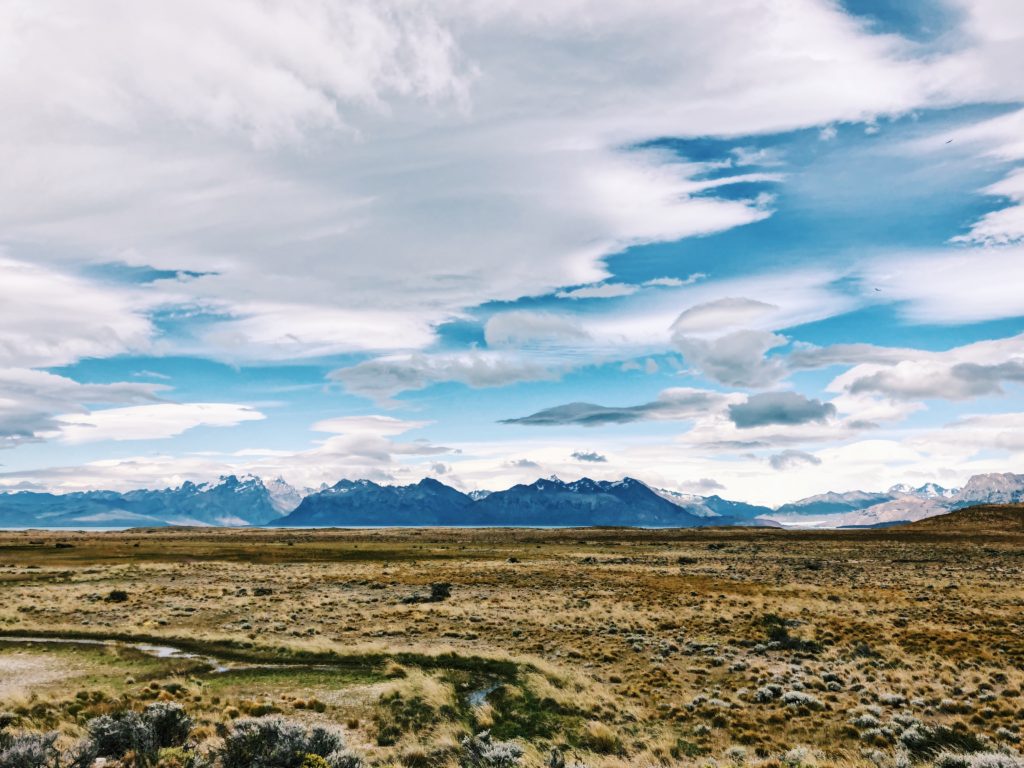
Once in El Chaltén, you get a quick break before continuing on with the tour. Some people simply take a bus to the town and try to find their own way. If you prefer to do that, you can— but it can take a bit of effort to get oriented.
Our bus continued to a woodsy area where we stopped to experience the rushing water of a beautiful creek through the forest. But my favorite part came after we took a small boat on a glacial river to an area where the hike began. This river looks like a like, but it’s actually the accumulation of all the glacier water that runs down the sides of the mountains. These streams flow from the very top, gathering rich minerals on its way down that give it a stunning blue-gray color.

The tour operator set us free to explore, and we commenced the hike. It is straight uphill for 45 minutes. As an inexperienced hiker I was huffing and puffing by the time we were 20 minutes in, but the view at the top was what ultimately took my breath away. I remember exclaiming to my companions that this is what Heaven must be like, taste like. Powerful winds whipped up against the beautiful mountainside, which cradled the blue river beneath. Little streams of glacier water trickled beneath our feet. The water tasted like flowers.
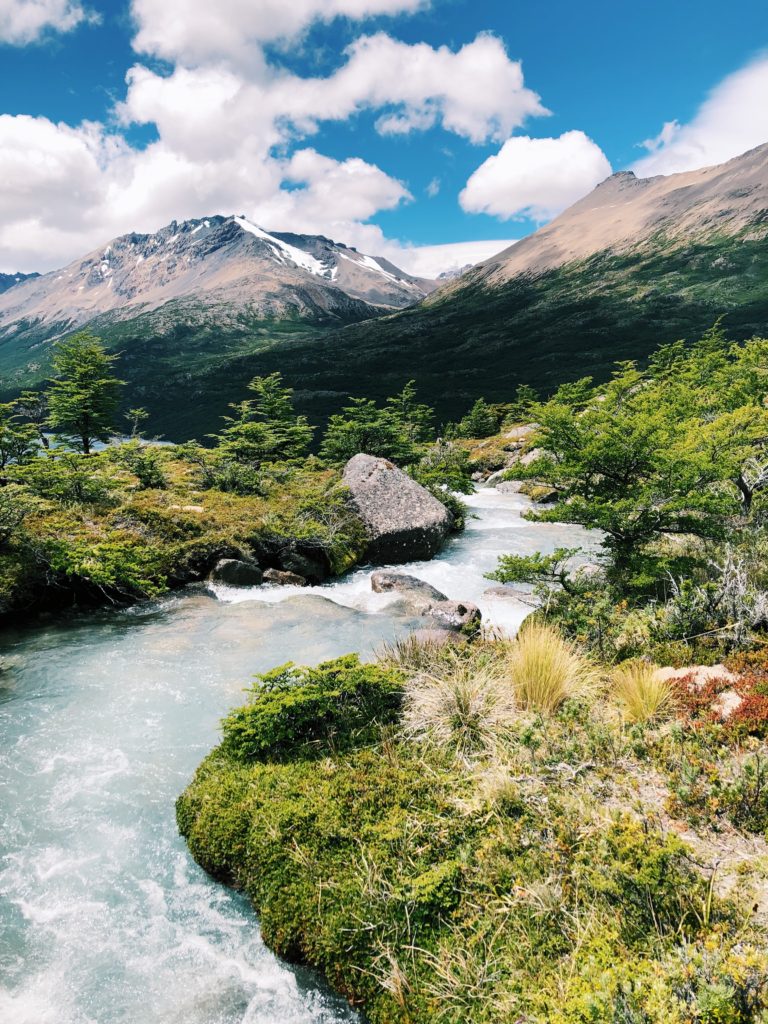
Tips for this excursion: If you take the tour we did, the basics of food, water, and transportation will be taken care of. Bring something to listen to while on the bus ride, and dress in layers that you can peel off as you’re hiking up the hill. Wear sturdy hiking shoes, sunscreen, and a windbreaker if you’re hiking to the top.
Day 3: Transfer to Ecocamp in Torres del Paine, Chile
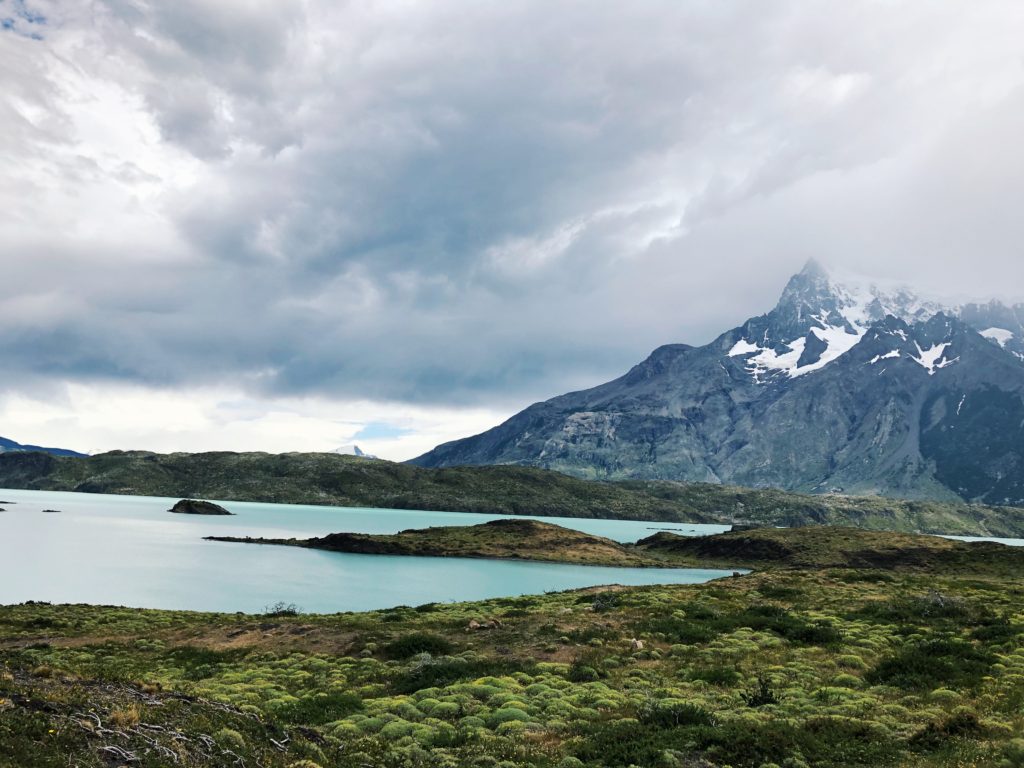
This is a travel day, during which you will cross the border from Argentina to Chile. Depending on your transportation method (bus or private car), it can take about 4-6 hours to do this. While large buses are available, we decided that our 8-person group’s time in Patagonia was more precious, so we hired a van with Wildlife Adventures. In doing so, we shaved off at least 2-3 hours in transit, which is a lot when you have a large group! I recommend leaving earlier in the day, so you can enjoy an afternoon and evening in Torres del Paine National Park.
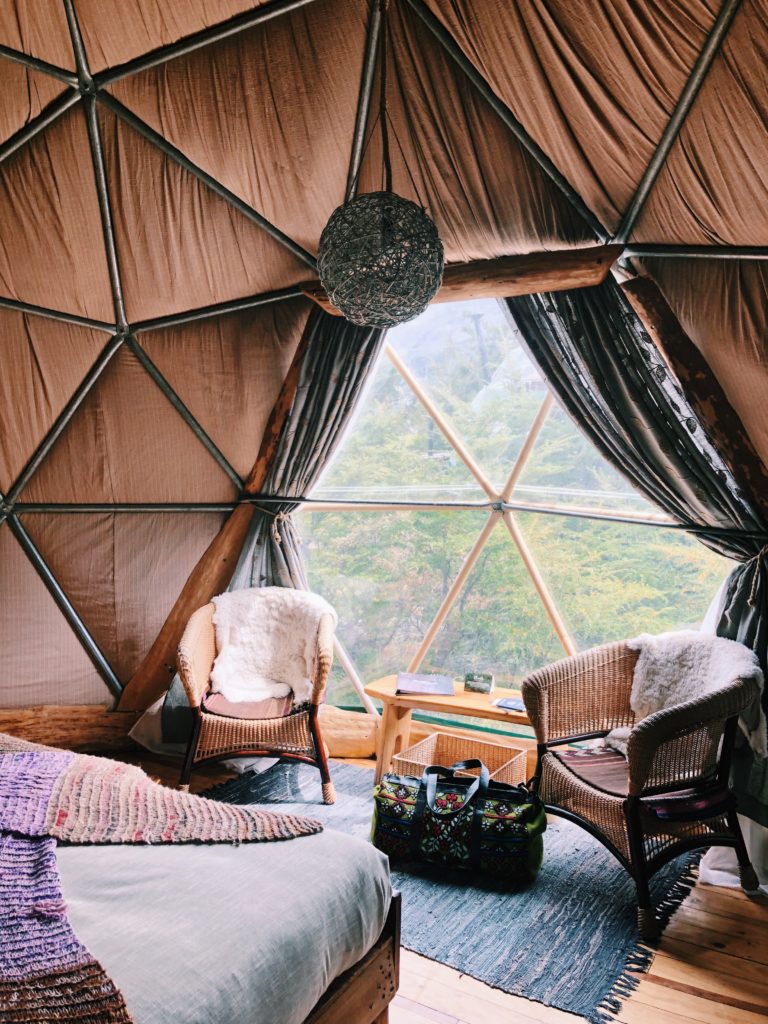
Where to stay: I cannot recommend EcoCamp Patagonia enough! Everything about our time in Torres del Paine was magnificent thanks to this incredible hotel. As is clear from the name, this is an environment-forward glamping experience, and it is perfect for such a beautiful location. Each dome is equipped with a warm bed and furniture; some have heat (highly recommend) and some have composting toilets, showers, and sinks. What I loved most was having our own view of the Torres (towers) that hover over the entire park.
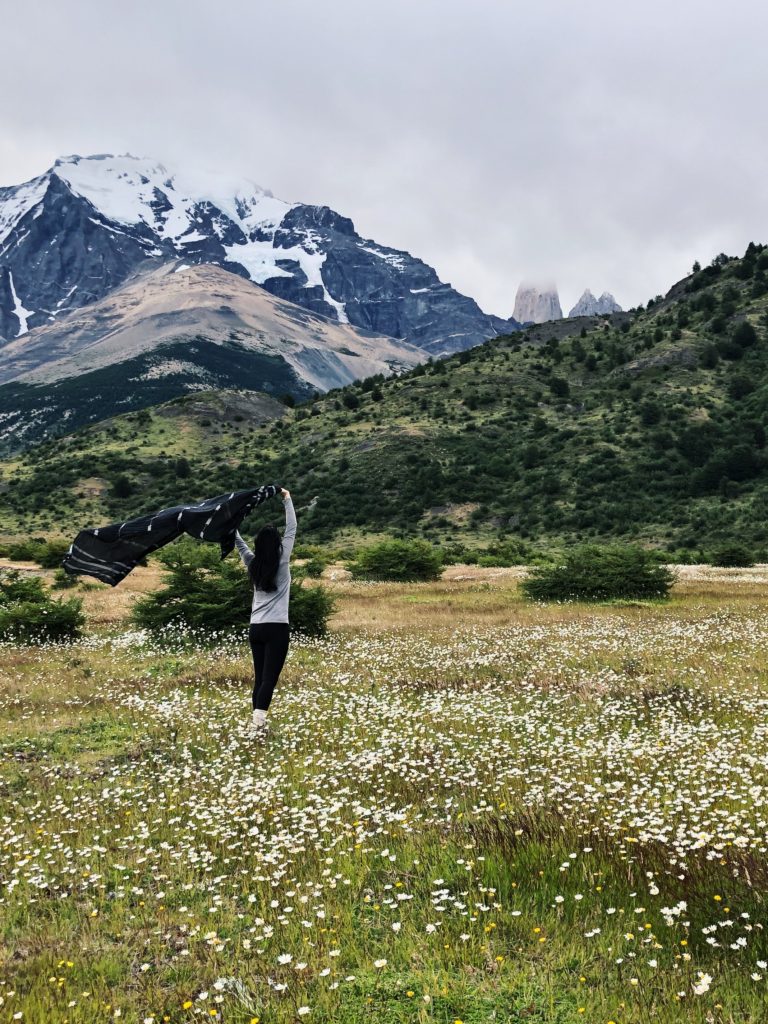
EcoCamp offers daily tours of varying strenuousness to its guests, and we took full advantage of this in order to see as much of the park as possible. All you have to do is decide the night before which excursion you want to take. If there’s something not on offer that interests you (like horseback riding), they try to make that happen too.
Their staff include local guides who are experts on the area and the friendliest around, and speak multiple languages. The sustainable food offered is grown by local farmers and absolutely delicious. And the overall ethos of the place is to build community with other travelers, stay off the Internet, and be present with the experience. (This post is NOT sponsored in any way by EcoCamp. My family chose to stay here and I’m sharing about it because we loved it!)
Day 4: The French Valley
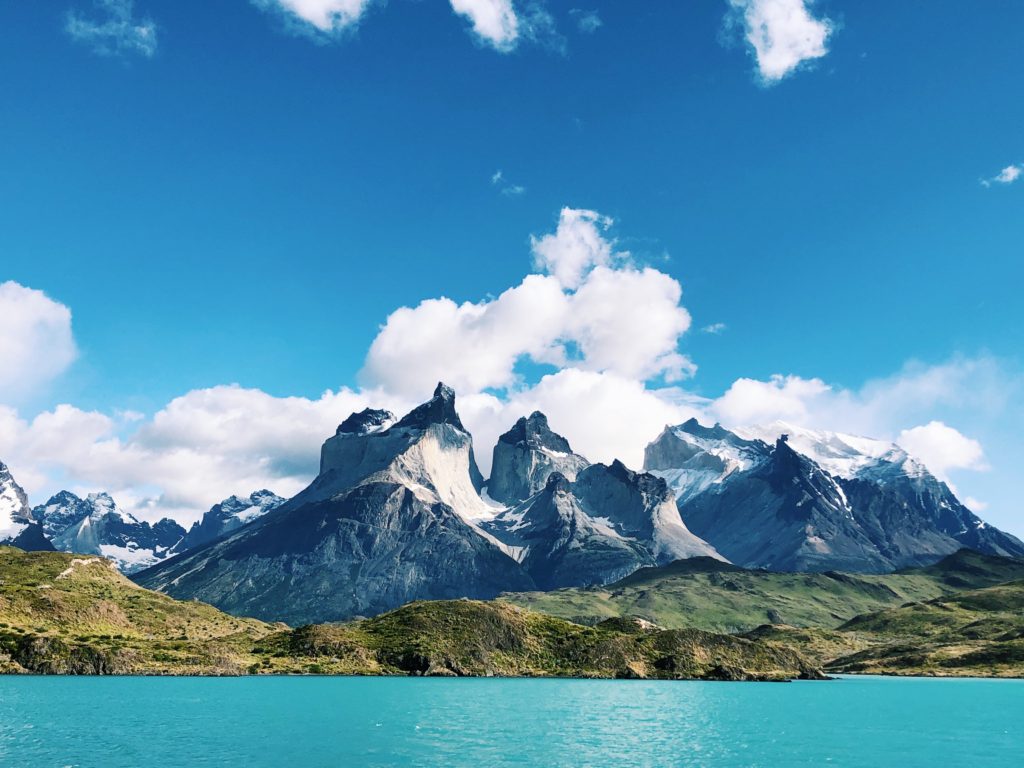
Wake up at the EcoCamp. If the French Valley hike is on offer, definitely say yes! (You can definitely do this hike even without staying at the EcoCamp, but will have to arrange your own arrival to the start of the trail!) This 9-hour excursion is strenuous but doable as long as you have reasonable walking endurance, appropriate clothing and shoes, and an adventurous spirit. I’ll be honest: it was a tough hike for everyone. But it was not too steep and there were only a few tricky portions. What I loved most about the hike was how beautiful it was the entire way.
The outing begins with a breathtaking boat ride across Lake Pehoe. If you’re with EcoCamp, you will arrive at the port extremely early and it will feel ridiculous. But as backpackers and travelers of every stripe begin to show up, it becomes evident why the morning begins at such an early hour. Spots on these boats are competitive, and sometimes they leave without you even if you have a ticket!
Once on the boat, you set sail for the French Valley hike trailhead. This is another campground with a few amenities, but I don’t highly recommend staying here. If you’re in a group hike, you’ll get to experience the entire journey up and down with an expert who can explain to you why the mountains are capped with dark peaks, which berries are edible, and the most harrowing stories of people getting lost in Patagonia (or burning 2/3 of the trees).
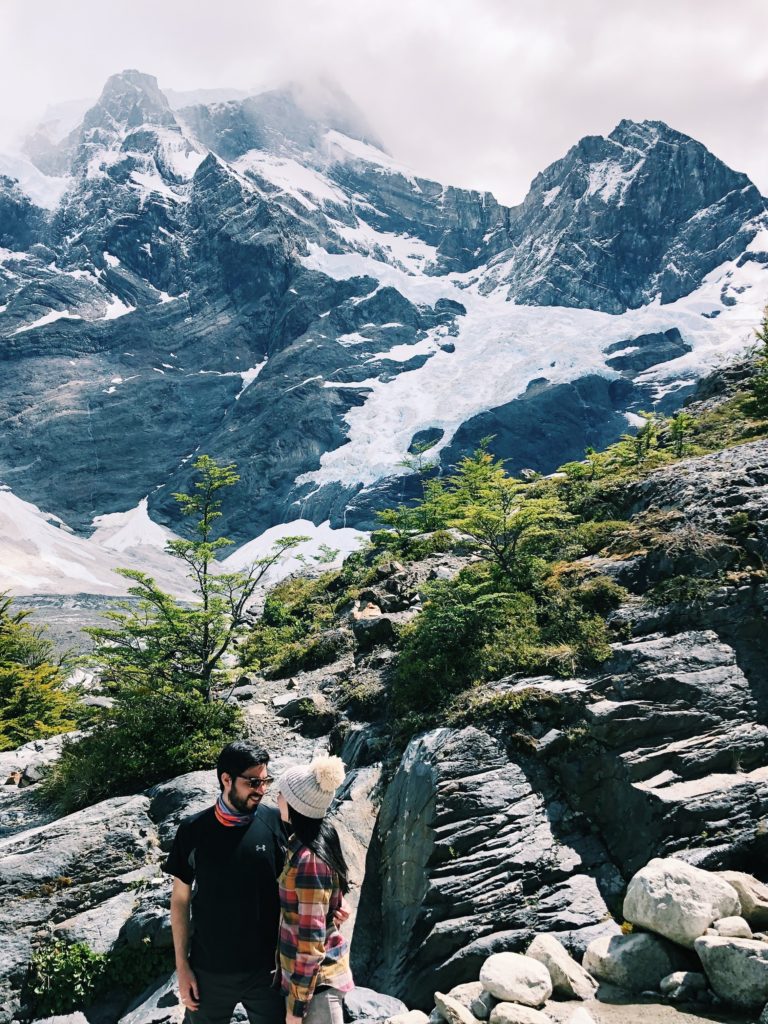
The French Valley itself is carved through by a rushing glacial stream. The destination of this hike is to get to the source of this stream after crossing one of the more rickety wooden bridges. It’s a bit anxiety inducing but the rush is quite exciting. Then you head down the mountain back to base camp for another three to four hours. Once down the mountain, be sure to line up for the boat that will return you to the port! People are desperate to leave at the end of the day, and there will be a mad rush when the boat shows up. This is one of the least fun parts of the day (and Patagonia in general): elbowing your way through a crowd of competitive hikers and backpackers who are probably more fit and less conscientious than you would expect!
Tips for this excursion: Any long day hike in Patagonia can feature weather of every variety, from sun to rain to thunder to hail. We had amazing weather most of the day, but were hailed on at the end. Word to the wise: do not rush down the mountain! Most people get hurt in the last quarter of their hike because they’re tired and usually anxious to finish. To prep for the weather, be sure you have waterproof clothing, breathable layers, and a windbreaker. If you choose to wear a hat, make sure it’s tight enough! And forget the umbrella— the wind blows rain sideways.
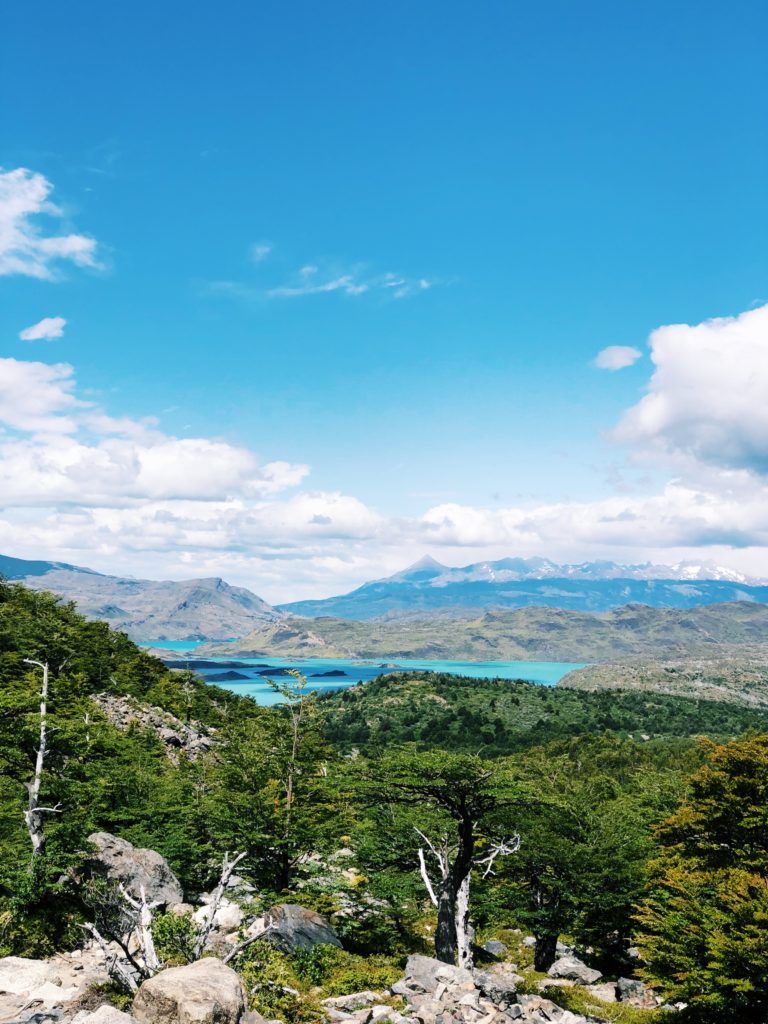
This is a challenging hike. We really enjoyed it even though we did not train at all, but I highly recommend training in order to be more comfortable on the trail. The trail is very rocky and you have to pay attention to where you step for 7-8 hours, which is a tiring mental exercise! Most people in our group were experienced hikers, or at least reasonably fit and quite agile on their feet. If you’re not sure if you can do it, try out an 8-hour hike on your own before your trip, preferably on unpaved trails.
Day 5: EcoCamp “Miradores” Tour of Torres del Paine
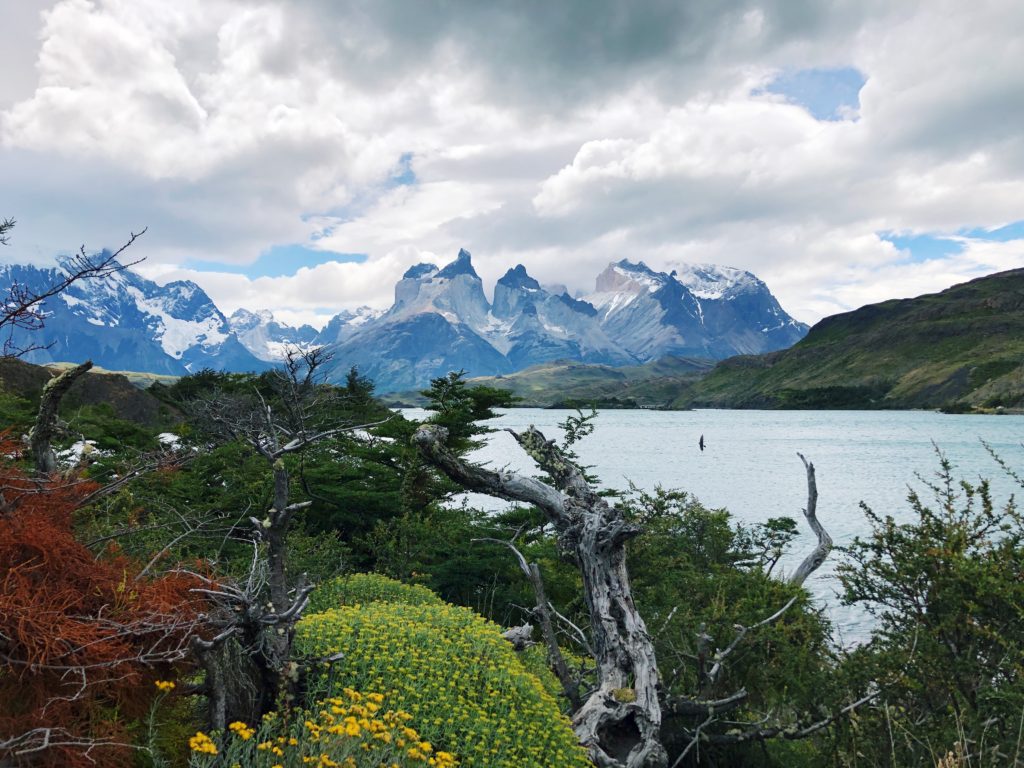
At this point, you might be wondering whether Torres del Paine is an appropriate destination if hiking for 9 hours sounds too painful for you. Well I have good news: Torres del Paine is incredible and accessible even to non-hikers! We had a few folks in our group who did none of the super long hikes, and still had a blast.
EcoCamp’s Miradores tour of Torres del Paine was magical. I was so impressed with just how accessible these views were. None of the walks were longer than 30 minutes, and most of it was flat. Still, we captured some of the most beautiful views in the park that day.
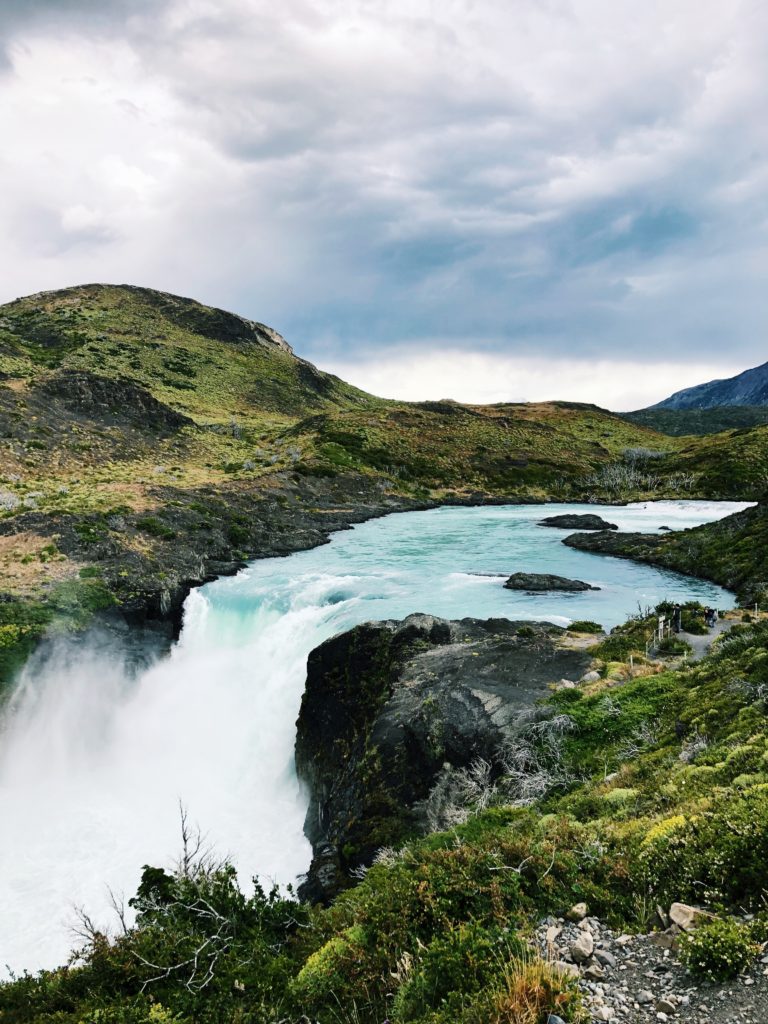
If you’re joining the Miradores tour through EcoCamp, it begins at a leisurely time in the morning, after breakfast. The guide and driver take you all over that region of the park to see bright turquoise waterfalls, black sand beaches, and dark capped mountains. There will definitely be quite a few guanacos peering about, condors flying overhead, and possibly even a Patagonian fox or two.
My favorite spot was sitting on the black sand on the shores of the lake, watching the calm waters lap up against a backdrop of towering mountains and dramatic storm clouds. On the way to the lake, we even found wild orchids rising up among the mosses on the side of the trail.
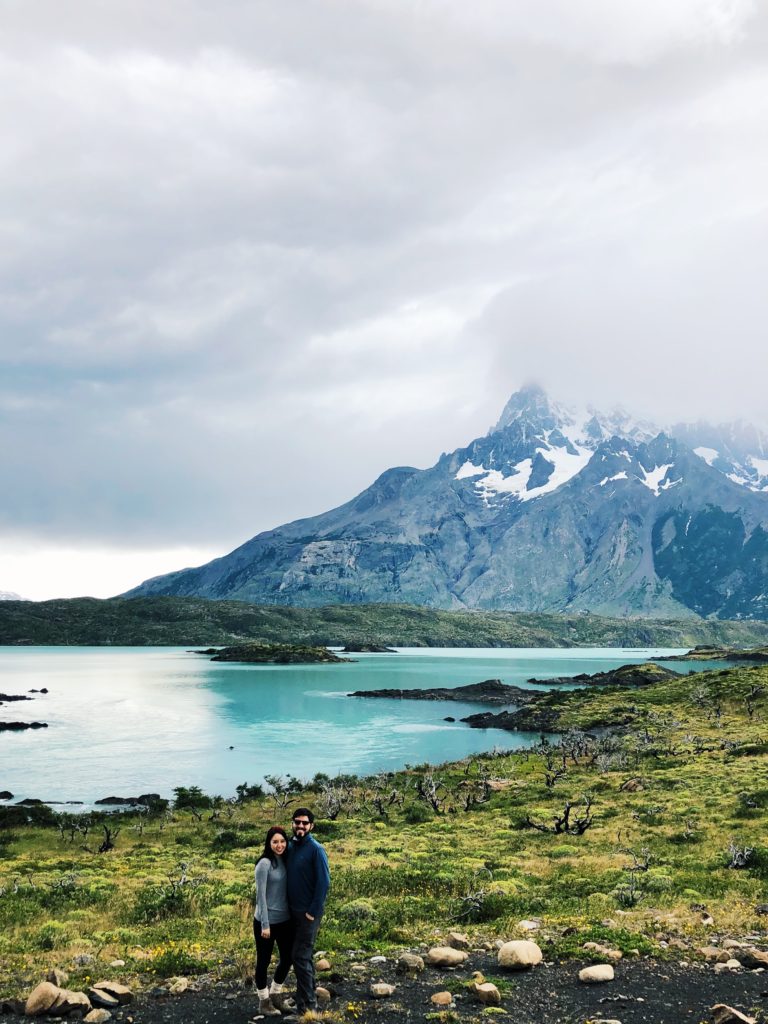
Tips for this excursion: I loved this excursion for how leisurely it was. Even though we were in Patagonia in high season, we still had plenty of moments completely alone with the landscape. If you’re driving around on your own, most of these sights are accessible but make sure you read the signs and follow the rules! Hiking shoes are recommended, along with any weather-appropriate gear, but you won’t be too far from the bus at any given point.
Day 6: Lago Azul or Base of the Torres
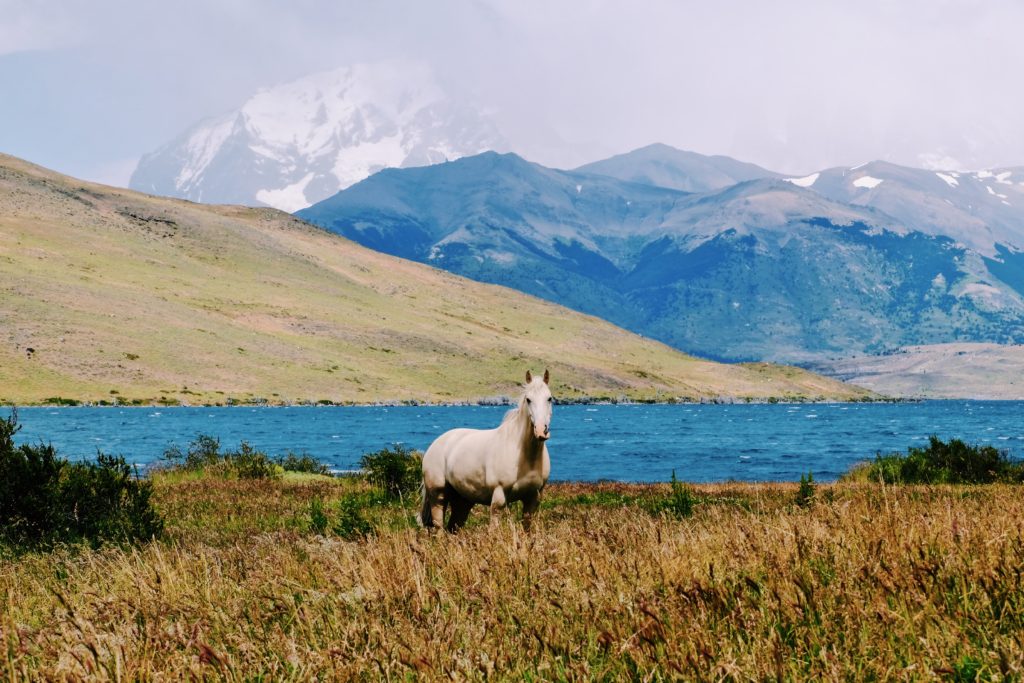
If you’re dying to do the quintessential Base of the Torres hike, this is the day to do it. It is the only way to get to the famous vista where three stone towers rise up over a stunning alpine lake. We did NOT do this hike because of the bad weather and how strenuous the hike is, so make sure you pay attention to the conditions. The EcoCamp group that did attempt this hike that day had to come back early because the wind made it unsafe. The Torres are not always visible, either, so if you really want to do this hike, pray for good weather!
We instead opted for a low-impact excursion to Lago Azul and to visit with traditional Patagonian gauchos. These cowboys have created a life for themselves in the region for over a century by some accounts, arriving not long after the Spanish came to South America. One of the major challenges in Patagonia these days is to balance respect for the gaucho lifestyle and the importance of conserving the incredible wildlife in the region. Farming posed a threat to Patagonian wilderness for decades, in part due to the clearing of trees to raise cattle and sheep, and the killing of predators to protect livestock.
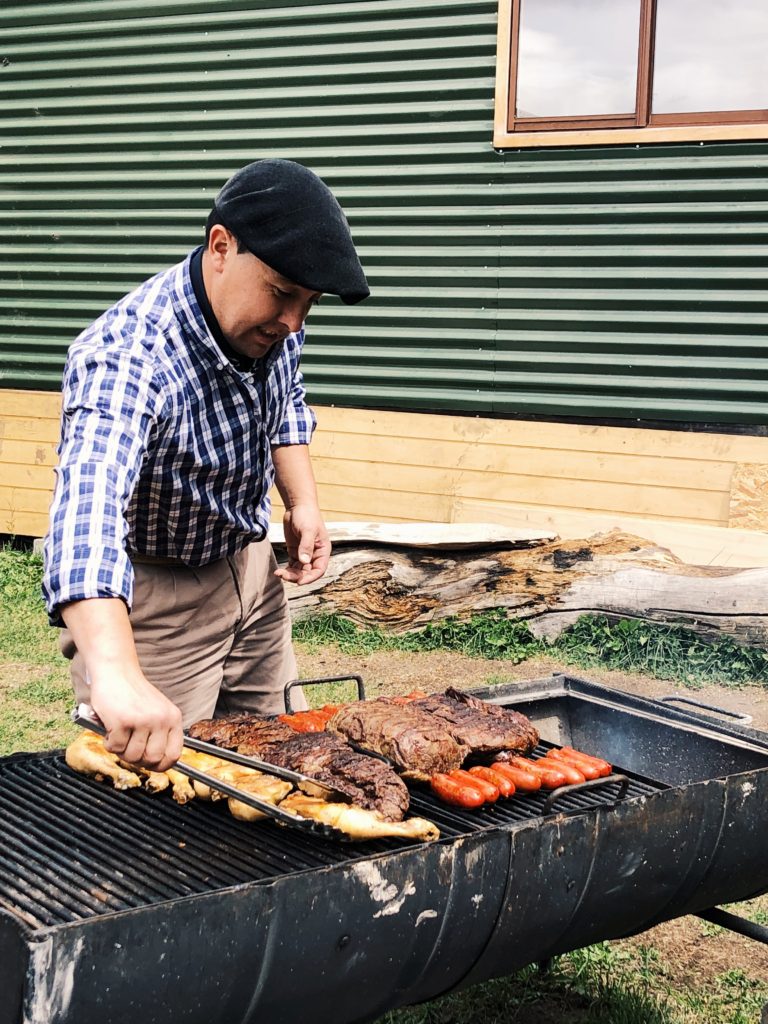
The gauchos we visited operate their farm in a sustainable way, and have a friendly partnership with EcoCamp. We first took a long walk along the Lago Azul, where we saw horses that belonged to the local farmers. (There are feral horses in Patagonia as well, and you can go on a tour to track them!) We then arrived at the farm where our hosts were already enthusiastically grilling a variety of meat and making beautiful side dishes. Seated with this group of extraordinary people, we argued with them over what makes the best kind of salsa and whether Patagonian wine was the best in all of South America.
If you’re able to do some relaxing on your final night in Torres del Paine, I highly recommend it. Go wander through a field of flowers, journal at the side of a lake, or do some detail photography of the plant life.
Day 7: Depart for Santiago, Chile
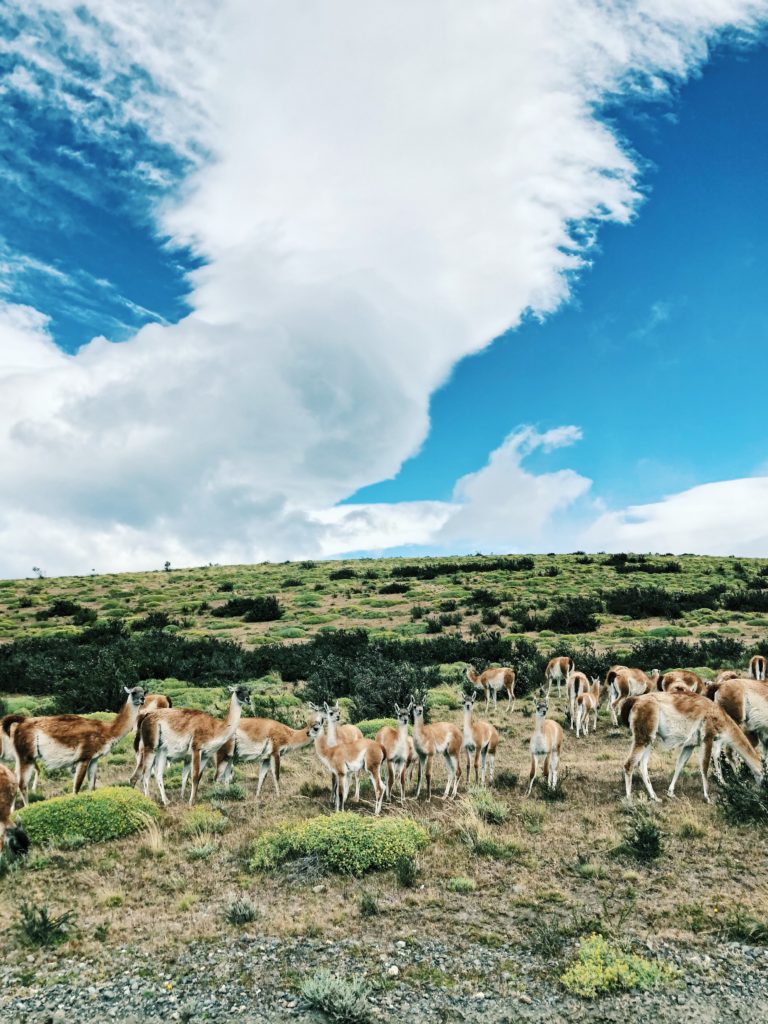
Wrap up your time in Patagonia and prepare for the long trip back to the major city of Santiago, Chile. I highly recommend getting up early to take a few final photos of the Patagonian sunrise, say goodbye to the friends you’ve made, and eat a full breakfast for the journey back.
Because Torres del Paine is pretty remote, your best bet is to request a transfer from Torres del Paine to Punta Arenas, the closest airport. This 4-hour car or bus transfer can be arranged privately or you can purchase a ticket on the many buses that leave Torres del Paine daily.
Upon arriving at Punta Arenas, you can decide to stay to visit the penguins on Magdalena island (which will require another full day of travel), or go straight to the airport. The flight from Punta Arenas to Santiago is pretty easy, and you can continue your travel from there onwards.
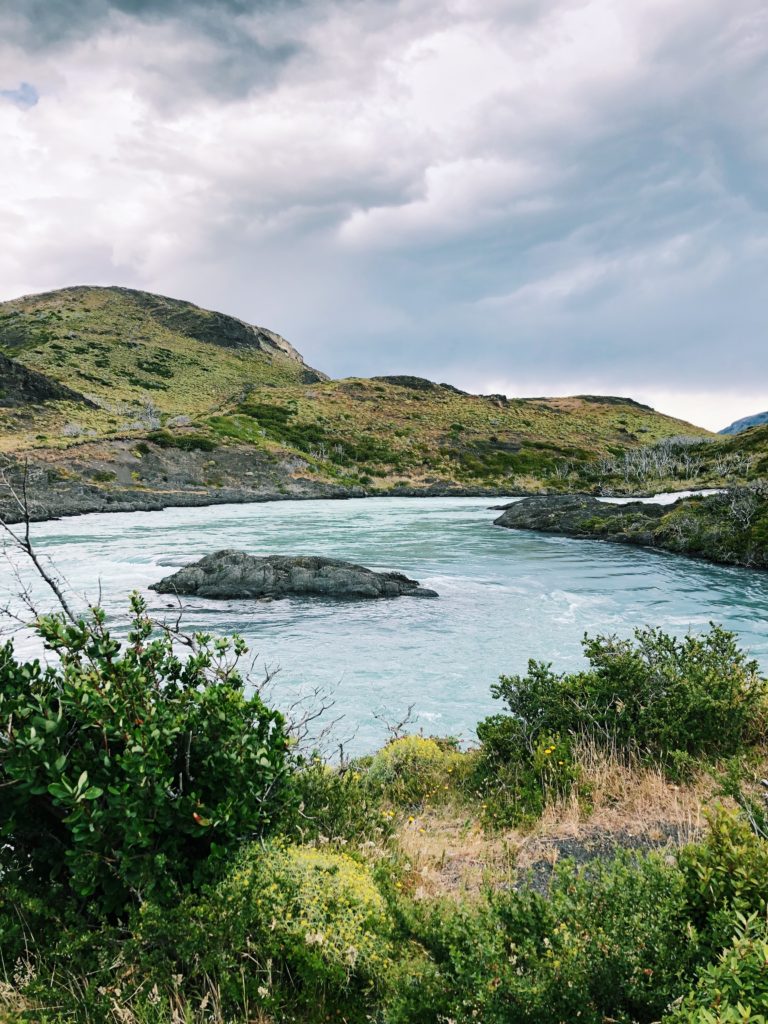
Packing tips for Patagonia
When I was told Patagonia’s weather could change in a heartbeat, I figured I could handle it with some layers and an umbrella. The umbrella turned out to be a joke because it is incredibly windy (also who hikes with an umbrella?!). As reluctant as I was to go shopping at L.L. Bean, I now highly recommend buying yourself some clothing made for being outdoors in unpredictable weather.
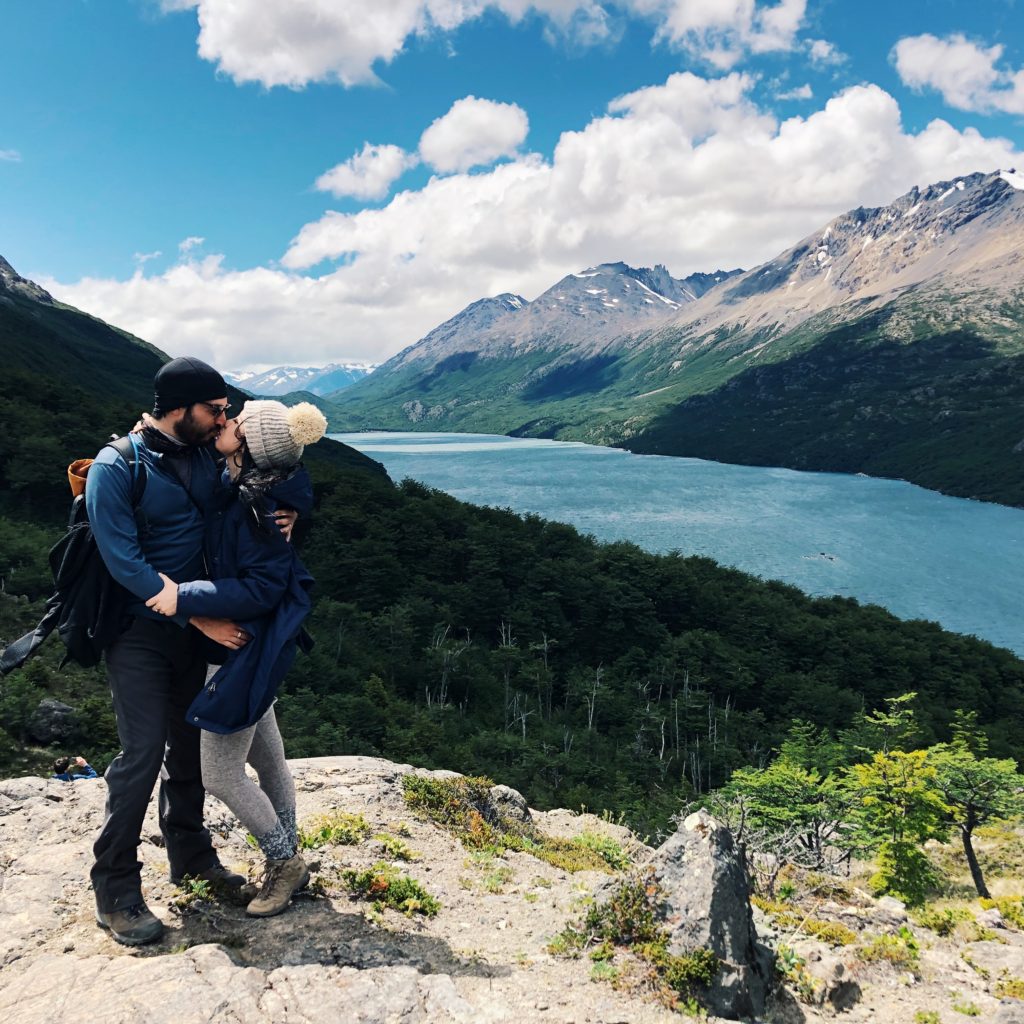
For day hikes in Patagonia in the summer (November – February), here’s what I recommend:
- Hiking boots (break them in beforehand)
- Waterproof jacket
- Breathable layers: fleece, thermal, flannel are good options
- Tight athletic leggings (for women)
- Hiking socks
- Comfortable backpack (bring a light one if you aren’t backpacking!)
- Beanie or warm hat
- Sunglasses (a must)
- Water bottle or Camelback
- Tissues and napkins
- Hand sanitizer
- Snacks (sometimes provided by tour)
A word on physical fitness
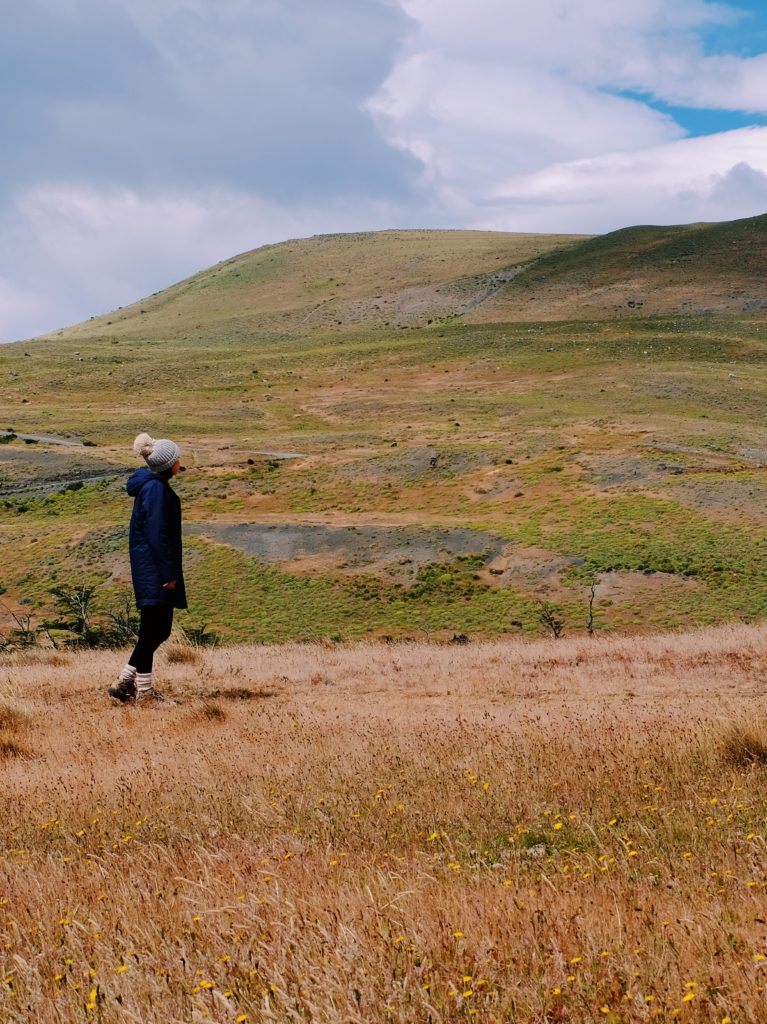
If you’re reading this guide, it’s probably because you’re not the backpacking type but still want to experience all that Patagonia has to offer. And to you, my advice is to do Patagonia your way. The itinerary shared here is accessible to people of all ages, as long as you are reasonably fit and have a good sense of humor.
And what do I mean by reasonably fit? You do not have to be able to run a 9-minute mile or do 30 pushups in a row. But you DO have to be comfortable walking for at least 2 hours without experiencing severe pain. If it’s been years since you were active outdoors for multiple hours, you probably would do well to train for this trip. Try going on a walk everyday for 30 minutes to an hour, and work up to longer hikes on the weekends. If you can sustain this level of activity, Patagonia will be far more enjoyable for you.
That said, you do not need to be an intense hiker in order to enjoy Patagonia! While the majority of people who visit the area are so-called “outdoorsy,” I promise that you don’t have to be like them. We did this trip without owning a backpack or having been to a national park in over a year. And we STILL got all the views and photos you see here, and really enjoyed ourselves.
If you’re worried about the intensity of the hiking, go to an outdoor store such as REI and ask them to help you. Do not buy a ton of gear; the right hiking boots, clothing, and walking sticks should be enough!
Further resources on Patagonia
I wish I had more time to research the region of Patagonia before flying down, but year one of the MBA program made that a bit difficult. Here are some of the resources I wish I’d looked at:
- Unbounded: a documentary on travelers through Patagonia
- 180 Degrees South: a documentary on the founder of Patagonia brand
- Moon Patagonia: the only recent guidebook on Patagonia specifically
- In Patagonia: this travel writer offers brilliant descriptions and a bit of history, and is a bestseller
- The House of the Spirits: this classic by Chilean author Isabel Allende is not about Patagonia, but was an exhilarating and eye-opening read on many of the long rides on our trip. It captures the spirit of Latin American history through the Chilean lens, from the days of patriarchal settlements to the harrowing dictatorship of the 20th century.
Pin this for future reference!
